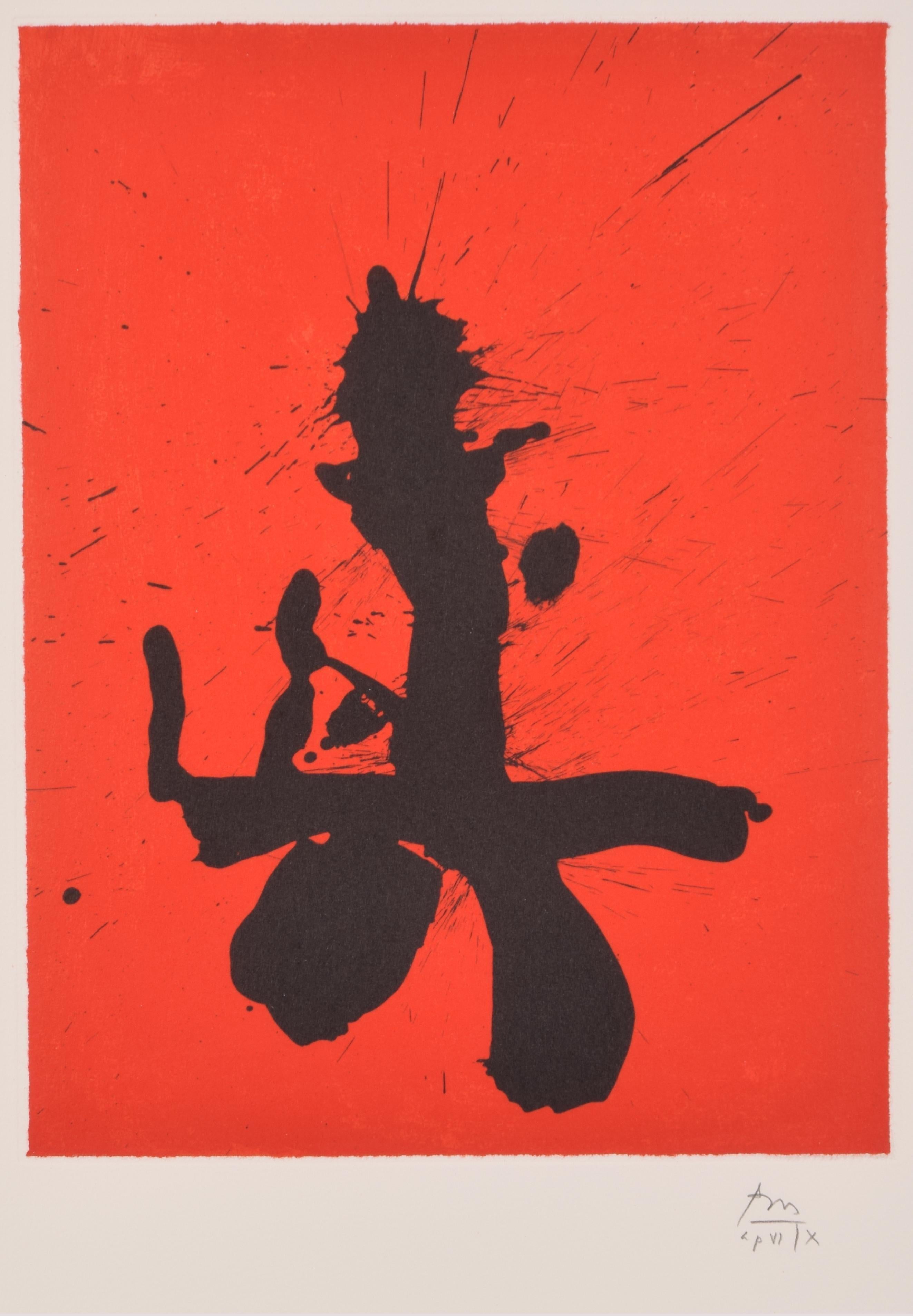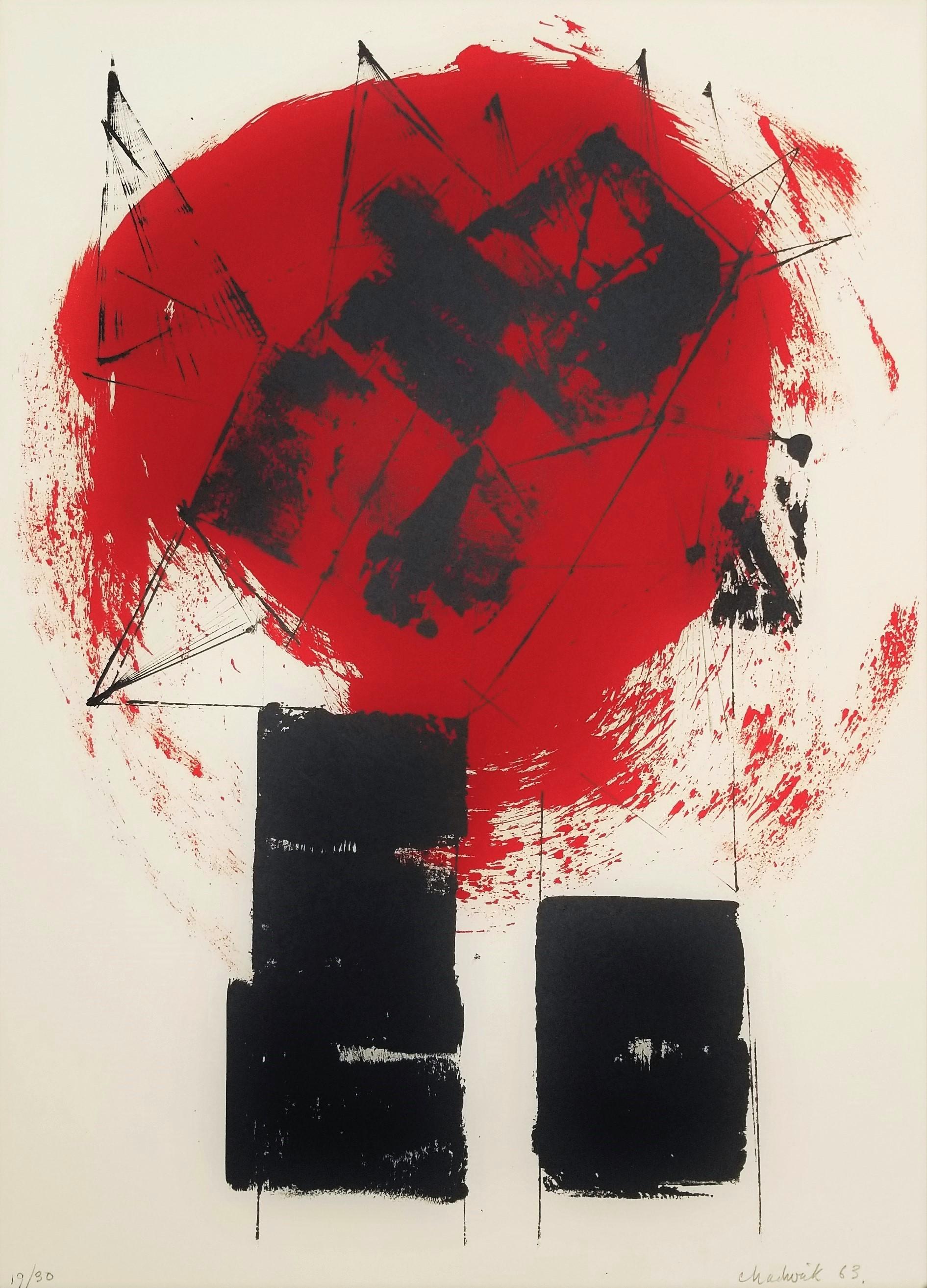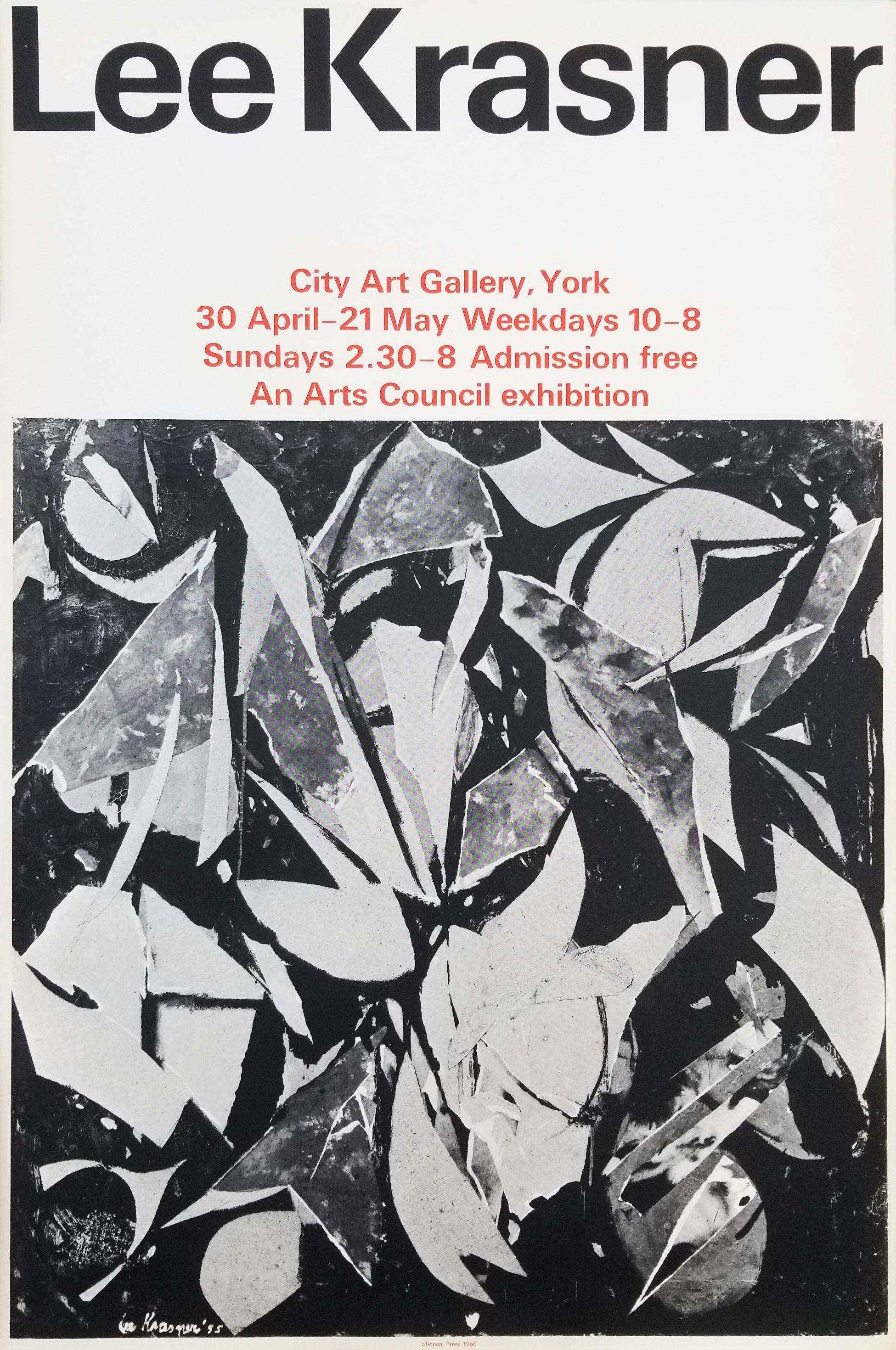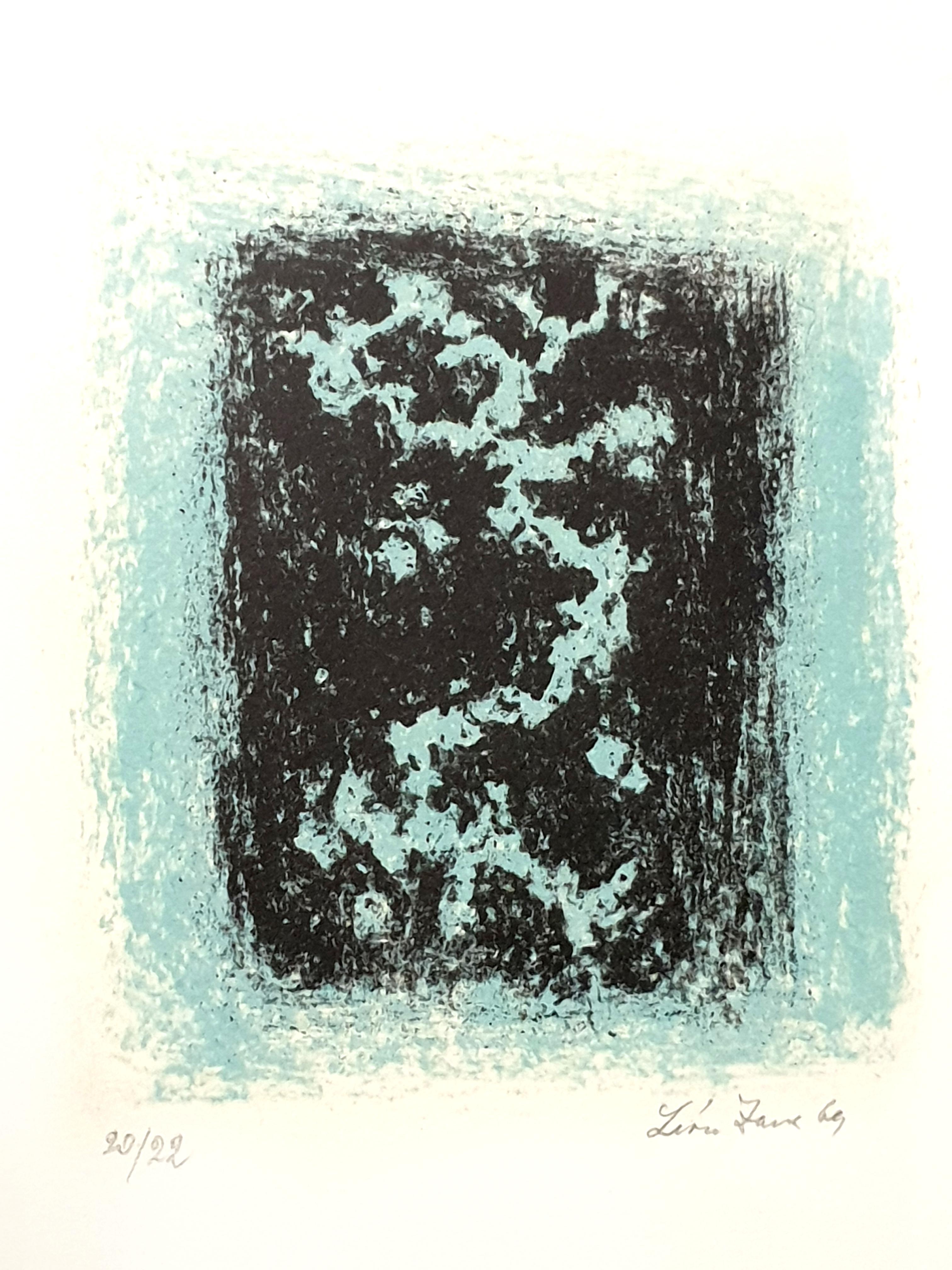Hans BurkhardtCalifornia Abstract Expressionist Linocut Lithograph Ronald Reagan Political Art1986
1986
About the Item
- Creator:Hans Burkhardt (1904 - 1994, Swiss)
- Creation Year:1986
- Dimensions:Height: 22 in (55.88 cm)Width: 30 in (76.2 cm)
- Medium:
- Movement & Style:
- Period:
- Condition:It has a large crease through top corner of image and some handling creases in margin. A good framer should be able to mat it out.
- Gallery Location:Surfside, FL
- Reference Number:1stDibs: LU3827038992
Hans Burkhardt
Hans Gustav Burkhardt was a Swiss-American abstract expressionist artist. He was born on December 20, 1904, in Basel. Burkhardt’s paintings of the 1930s are part of the genesis of American abstract expressionism. He moved to Los Angeles in 1937 and represented the most significant bridge between New York and Los Angeles. He brought with him many of the nascent ideas of abstract expressionist painting that had been swirling among New York's artists, foremost among them, Arshile Gorky and Willem de Kooning. Working independently in Los Angeles, Burkhardt's experimental investigative approach parallelled and in many instances anticipated the development of modern and contemporary art in New York and Europe. His unique role as an important American painter is affirmed by the constant interest and continuing reassessment afforded his work. In 1992, Burkhardt was honored as the recipient of the Lifetime Achievement Award by the American Academy of Arts and Letters. His works are displayed across many museums, including the British Museum, Metropolitan Museum of Art, Whitney Museum of American Art, Los Angeles Museum of Contemporary Art and Norton Simon Museum. Burkhardt died on April 22, 1994, in Los Angeles.
- ShippingRetrieving quote...Ships From: Surfside, FL
- Return PolicyA return for this item may be initiated within 3 days of delivery.
- California Abstract Expressionist Linocut Lithograph Sepia Print Edition of 6By Hans BurkhardtLocated in Surfside, FLUntitled, 1983, lithograph printed in sepia ink, Hand signed and dated lower right, numbered in pencil with the artist's chop mark lower left, inscribed by artist. From a series of experimental abstract linocuts done in 1983. These are very small editions and were gifted to a friend of the artist. They are done on deckle edged French Arches Art paper. Hans Gustav Burkhardt (1904 – 1994) was a Swiss-American abstract expressionist artist. Hans Burkhardt was born in the industrial quarter of Basel, Switzerland. Captivated by Germanic art, he began dabbling in art in his spare time while learning how to decorate furniture in antique styles. He became foreman of the furniture company's decorating department. From 1925 to 1928 he attended the Cooper Union School of the Arts, where he befriended mentor Arshile Gorky and Willem de Kooning—sharing Gorky's studio from 1928 to 1937. Burkhardt's paintings of the 1930s are part of the genesis of American abstract expressionism. In 1937 he moved to Los Angeles and represented the most significant bridge between New York and Los Angeles. His experimental investigative approach paralleled, and in many instances anticipated, the development of modern and contemporary art in New York and Europe including the work of Mark Rothko, Jackson Pollock, and Barnett Newman. Burkhardt held his first solo exhibition in 1939 at Stendahl Gallery in Los Angeles, arranged by Lorser Feitelson, and, in response to the Spanish Civil War, he painted his first anti-war works. From the late 1930s he began to produce apocalyptic anti-war compositions, a theme which became particularly pronounced in an abstract expressionist style after the atom bomb was dropped on Hiroshima and Nagasaki at the end of the Second World War. In the years following an acclaimed (1945) solo exhibition at the Los Angeles County Museum, Burkhardt continued in his art to respond to WWII, in the aftermath of Gorky's suicide in 1948, Burkhardt delved into his grief and celebration of Gorky's life creating several versions of “Burial of Gorky” and a series entitled “Journey into the Unknown.” Burkhardt first visited Mexico in 1950, and spent the next decade living half of the year in and around Guadalajara. Strongly influenced by Mexican attitudes towards the dead, and by the country's colors, sensuality, and spiritual qualities, Burkhardt “painted the soul of Mexico” with Mexican themes and colors—especially those of burials and ceremonies surrounding death—permeating his abstract work. His Mexican work flirted with Surrealism although he was never really considered a Surrealist artist. Art critics of the time considered him a "great Mexican master” alongside Orozco, Diego Rivera, and Siqueiros, and Rufino Tamayo admired his work. Overall, in the 1950s Burkhardt held 23 solo exhibitions in Los Angeles and Mexico, and participated in group shows at over thirty museums worldwide. He was friends with June Wayne from Tamarind Press. In the 1960s he produced paintings in protest against the Vietnam War, some of which incorporated the human skulls he had collected from Mexican graveyards. As art historian Donald Kuspit stated, Burkhardt was “a master—indeed the inventor—of the abstract memento mori.” In 1964, for the first time in forty years, Burkhardt returned to Basel, and began making annual summer visits where he became a friend of Mark Tobey—printing linocuts for the artist and collecting his work. In the 1970s Burkhardt continued his anti-war paintings—incorporating protruding wooden spikes into the canvas—while simultaneously painting abstractions of merging lovers and cityscapes during his summer visits to Basel. His “Small Print” (protesting smoking), “Graffiti,” and “Northridge” series demonstrate the evolution of his symbolism, and his “Desert Storms” series, in response to Iraq's invasion of Kuwait, was discussed by critic Peter Selz at a presentation at the International Congress of Art Critics Conference. In the last decades of his life, Burkhardt's work had moved from images of imbalance to a study of human tragedy—which he embraced in an attempt to discover beauty and facilitate understanding. Critic Peter Frank called Burkhardt “…one of America’s most vital abstract expressionist painters, someone who took the seed of the movement and cultivated it a rather different way in very different soil.” Burkhardt taught at numerous colleges and universities and retired as a professor emeritus from California State University, Northridge. In 1992 Burkhardt was honored as the recipient of the Lifetime Achievement Award by the American Academy and Institute of Arts and Letters’ Jimmy Ernst (son of Max Ernst) Award. Also in 1992, he established the Hans G. and Thordis W. Burkhardt Foundation. In 1993, the last year of his career, his final series “Black Rain” channeled pain and hardship, but provided poignant, symbolic beacons of hope and wishes for a better future for humanity. His unique role as an important American painter is affirmed by the constant interest and continuing reassessment afforded his work. Select Solo exhibitions 1939: Stendahl Gallery, Los Angeles, March 27 – April 17 1945: Hans Burkhardt, Los Angeles County Museum of Art 1951: Museo de Bellas Artes, Guadalajara, Mexico: Exhibición de Pinturas Modernas; Comara Gallery, Los Angeles 1953: Fisher Gallery, University of Southern California, Los Angeles 1957: Pasadena Art Museum, California: Ten Year Retrospective, June 14 – July 14; 1968: San Diego Museum of Art: Vietnam Paintings...Category
1980s Abstract Expressionist Abstract Prints
MaterialsLithograph, Linocut
- Ariadne, Poem, Mixed Media Abstract Modernist Colorful Collage Lithograph PrintBy Matt PhillipsLocated in Surfside, FLColor lithograph with color paper collage, 1987. Pencil signed lower right and dated, and numbered lower left 5/24. Litho depicts a poem titled "Ariadne" by T. Weiss. Published by ...Category
1980s Abstract Expressionist Abstract Prints
MaterialsMixed Media, Tissue Paper, Lithograph
- Large Format Modernist Abstract Lithograph Silkscreen Print Woman ArtistBy Lydia DonaLocated in Surfside, FL1982-84 Hunter College, New York (M.F.A.) 1978-80 School of Visual Arts, New York 1973-77 Bezalel Academy of Art, Jerusalem (B.F.A.) American, born in Romania Lives and works in New York City Solo Exhibitions 2008 Michael Steinberg Fine Art, New York 2006 Galeria Joan Prats, Barcelona 2005 Karpio + Facchini Gallery, Miami Jacob Karpio Galeria, San Jose (Costa Rica) 2004 Michael Steinberg Fine Art, New York 2001 Marella Arte Contemporanea, Milan 2000 Von Lintel & Nusser, New York Galerie Von Lintel & Nusser, Munich 1998 Galerie Thomas von Lintel, Munich 1997 Galerie des Archives, Paris 1995 Galerie Samuel Lallouz, Montreal L.A. Louver, Los Angeles 1994 Marc Jancou Gallery, London Galerie des Archives, Paris 1993 Galerie Barbara Farber, Amsterdam Real Art Ways, Hartford (Connecticut) 1992 Tom Cugliani Gallery, New York Galerie Marc Jancou, Zurich Galerie des Archives, Paris 1989 Tom Cugliani Gallery, New York Galerie Barbara Farber, Amsterdam Studied at bezalel from 1973 to 1977. And it was a very fascinating time because it was a highly conceptually based school. Very much influenced by Joseph Beuys, and European Conceptualism, I didn’t really like the atmosphere there that much, because it was dominated by male painters like Jörg Immendorf, Marcus Lupertz, and a few others. then came to New York to study at SVA for two years. New York in 1978 was exciting. I was very lucky to be in a class that was full of very bubbly and very energetic artists like Keith Haring, Kenny Scharf, Tim Rollins, Moira Dryer, Frank Holliday, and Tom Cugliani (who later became one of my dealers).The eighties were dominated largely by Neo-Expressionist paintings. There were Germans, such as Baselitz, Kiefer, Richter, Penck, and the Italians, Clemente, Chia, Cucchi, Palladino as well as Schnabel, Fischl, Basquiat, Salle, and many others, but all of their paintings were figuratively based. But below the popular consent, there was a group of painters who were working more in the vein of what Stephen Westfall referred to as “Neo-Surrealism,” including George Condo, Jeffrey Wasserman, Kenneth Scharf, David Humphrey. However, I felt that Carroll Dunham and you were the only two painters who seemed to be less interested in the kind of narrative, lyrical, or let’s say, stationary composition. He belongs to the generation of Terry Winters, Elizabeth Murray, David Reed and Jonathan Lasker but in some strange way, if we’re looking back to the mid-eighties, we have to include New Image painters like Susan Rothenberg, Neil Jenney, and Robert Moskowitz who were working in between the figure and abstraction with a kind of condensation and compression, in relationship, lets say, to cartoon imagery. There are artists like Jeff Koons, or even Damien Hirst who took the Duchampian aspect and brought it into the continuity of his readymade. But for me, I see no difference between the crack in “Large Glass” and the drips in Jackson Pollock’s paintings. There was something that I felt in my own equation of the continuity between Paul Klee, Duchamp, Picabia, and, oddly enough, Clyfford Still. What essentially is important is how different artists carry on a dialogue among themselves so that they can all keep their work vital. Whether from the abstract paintings of Richmond Burton, Fabian Marcaccio extending the borders of his paintings on to the wall, or Cady Noland’s early scattered installation, my own pre-occupation with machinery, urban environment, and the Duchampian models has always materialized in relationship to other forms of art making. Selected Group Exhibitions: 2014 Drawing on Difference: An Ambition by Saul Ostrow and Lidija Slavkovic, Studio Vendome Gallery, New York. 2013 Drawing on Habit: An Ambition by Saul Ostrow and Lidija Slavkovic, South Carlton Beach and The Betsy-South Beach Exhibition Programs, Art Basel, Miami Beach. 2013 Imprinted Pictures: Lydia Dona...Category
1980s Abstract Expressionist Abstract Prints
MaterialsScreen, Lithograph
- Large 1960's California Pop Art Abstract Expressionist LA Lithograph John AltoonLocated in Surfside, FLJohn Altoon (1925-1969) UNTITLED, 1966, color lithograph, hand signed in pencil and inscribed trail proof II, sheet 29 ¾ x 41 ¼, printed by Gemini G.E.L.,...Category
1960s Abstract Expressionist Abstract Prints
MaterialsLithograph
- Bright Vibrant Pop Art Silkscreen Lithograph Print NYC Abstract ExpressionistBy William ScharfLocated in Surfside, FLRed Angel, intensely and seductively colored: swooning purples and reds, ecstatic lemon yellows, and black construction paper. Jostling shapes, geometric and biomorphic, lyrical and hard-edged, refuse to resolve neatly Assemblage, a bold strategy to keep viewers unsettled and curious, the reward for which are profuse and luscious details: varied incidents of refinement, suggestive signs, most in a private code, not merely ornamental but integral to the overall message. William Scharf (born 1927, Media, PA) is an American artist from New York, he teaches at The Art Students League of New York. Painting with acrylics, he was a member of the New York School movement. Often categorized as a late generation Abstract Expressionist, Known for producing paintings with abstract compositions incorporating biomorphic and geometric forms in vivid colors, the artist was influenced by Surrealism, the Color Field painters, and symbolism. He apprenticed with Mark Rothko and was influenced by his color field paintings. The surrealist painter Arshile Gorky and the Abstract expressionism style found in 1950s New York City also influenced Scharf. His exhibits include San Francisco Art Institute (1969), the Pepperdine University's Frederick R. Weisman Museum of Art (2001), and Richard York Gallery in New York City (2004). In the heyday of Abstract Expressionism, being serious meant following the tenets of the New York School, which required abstract paintings to be spontaneous improvisations, the messier the better. At once hedonistic and disciplined, his brazen paintings are nothing if not promiscuous. The best ones mix the dynamism of gestural abstraction with sensual rhythms of decorative patterning, sometimes souping up the stew with cartoonish symbols and flourishes so ripe they belong in a dandy's fantasies. His exhibits include San Francisco Art Institute (1969), the Pepperdine University's Frederick R. Weisman Museum of Art (2001) and Richard York Gallery in New York City (2004). Scharf's work has been exhibited in a number of galleries, including the Anita Shapolsky Gallery, Meredith Ward Fine Art, and Hollis Taggart Galleries in New York City. Scharf has been an instructor of art at various institutions including The Art Students League, the San Francisco Art Institute, and the School of Visual Arts in New York. He is a member of the Society of Illustrators and the Artists Equity Association. EDUCATION 1944-49 The Pennsylvania Academy of the Fine Arts — Philadelphia, PA (1948 Cresson Scholar) 1949 The University of Pennsylvania — Philadelphia, PA 1948 The Academie de la Grand Chaumiere — Paris, France 1947 The Barnes Foundation — Merion, PA 1939-41 Samuel Fleisher Memorial School— Philadelphia, PA (also known as Graphic Sketch Club) TEACHING HISTORY Instructor: Painting & Drawing 1987-Present Art Students League, New York, NY 1989, 74, 69, 66, 63 San Francisco Institute of Fine Arts, San Francisco, CA 1965-69 he School of Visual Arts, New York, NY 1964 Art Center of the Museum of Modern Art, New York, NY Guest Lecturer 1979 Pratt Institute, New York, NY 1974 Stanford University, Palo Alto, CA 1974 California College of Arts and Crafts, San Francisco, CA Recent Solo Exhibitions: 2005 Meredith Ward Fine Art, New York, NY 2004 Richard York Gallery, New York, NY 2002 P.S.1/MOMA, Queens, NY 2001 The Frederick R. Weisman Museum of Art, Malibu, CA 2000-2001 The Phillips Collection, Washington, DC Selected Group Exhibitions: 2005 National Academy of Design, New York, NY 2005 Peter McPhee Fine Arts, Stone Harbor...Category
1970s Abstract Expressionist Abstract Prints
MaterialsLithograph, Screen
- Pietro Consagra Italian Mod Abstract Expressionist Forma Brutalist LithographBy Pietro ConsagraLocated in Surfside, FLPietro Consagra (Italian, 1920-2005). Hand signed in pencil and numbered limited edition color lithograph on Magnani paper. Embossed stamp with limited edition numbers in pencil to lower left, and having artist pencil signature to lower right. (from a limited edition of 80 with 15 artist's proofs) Published by Stamperia 2RC, Rome Italy and Marlborough Gallery, Rome, Italy. Abstract Modernist work in colors, produced in the style of the Forma art movement of Postwar Italy, of which the artist was a prominent member. Pietro Consagra (1920 – 2005) was an Italian Post war artist working in painting, printmaking and sculpture. In 1947 he was among the founding members of the Forma 1 group of artists, proponents of structured abstraction. Consagra was born on 6 October 1920 in Mazara del Vallo, in the province of Trapani in south-western Sicily, to Luigi Consagra and Maria Lentini. From 1931 he enrolled in a trade school for sailors, studying first to become a mechanic, and later to become a captain. In 1938 he moved to Palermo, where he enrolled in the liceo artistico; despite an attack of tuberculosis, he graduated in 1941, and in the same year signed up at the Accademia di Belle Arti, where he studied sculpture under Archimede Campini. After the Invasion of Sicily and the Allied occupation of Palermo in 1943, Consagra found work as a caricaturist for the American Red Cross club of the city; he also joined the Italian Communist Party. Early in 1944, armed with a letter of introduction from an American officer, he travelled to Rome. There he came into contact with the Sicilian artist Concetto Maugeri, and through him with Renato Guttuso, who was also Sicilian and who introduced him to the intellectual life of the city and to other postwar artists such as Leoncillo Leonardi, Mario Mafai and Giulio Turcato. Consagra signed up at the Accademia di Belle Arti di Roma in September 1944 and studied sculpture there under Michele Guerrisi, but left before completing his diploma. In 1947, with Carla Accardi, Ugo Attardi, Piero Dorazio, Mino Guerrini, Achille Perilli, Antonio Sanfilippo and Giulio Turcato, Consagra started the artist's group Forma 1, which advocated both Marxism and structured abstraction. Steadily Consagra's work began to find an audience. Working primarily in metal, and later in marble and wood, his thin, roughly carved reliefs, began to be collected by Peggy Guggenheim and other important patrons of the arts. He showed at the Venice Biennale eleven times between 1950 and 1993, and in 1960 won the sculpture prize at the exhibition. During the 1960s he was associated with the Continuità group, an offshoot of Forma I, and in 1967 taught at the School of Arts in Minneapolis. Large commissions allowed him to begin working on a more monumental scale, and works of his were installed in the courtyard of the Foreign Ministry in Rome and in the European Parliament, Strasbourg. His work is found in the collections of The Tate Gallery, London, in Museo Cantonale d'Arte of Lugano and the Museum of Modern Art, Paris, and the National Gallery of Art in Washington, D.C.. Consagra returned to Sicily where he sculpted a number of significant works during the 1980s. With Senator Ludovico Corrao, he helped created an open-air museum in the new town of Gibellina, after the older town had been destroyed in the earthquake of 1968. Consagra designed the gates to the town's entrance, the building named "Meeting" and the gates to the cemetery, where he was later buried. In 1952 Consagra published La necessità della scultura ("the need for sculpture"), a response to the essay La scultura lingua morta ("sculpture, a dead language"), published in 1945 by Arturo Martini. Other works include L'agguato c'è ("the snare exists", 1960), and La città frontale ("the frontal city", 1969). His autobiography, Vita Mia, was published by Feltrinelli in 1980. In 1989 a substantial retrospective exhibition of work by Consagra was shown at the Galleria Nazionale d'Arte Moderna in Rome; in 1993 a permanent exhibition of his work was installed there. In 1991 his work was shown in the Hermitage Museum in St. Petersburg. In 2002 the Galerie der Stadt Stuttgart opened a permanent exhibition of his work. He was one of ten artists invited by Giovanni Carandente, along with David Smith, Alexander Calder, Arnaldo Pomodoro, Lynn Chadwick, and Beverly Pepper, to fabricate works in Italsider factories in Italy for an outdoor exhibition, "Sculture nella città", held in Spoleto during the summer of 1962. He was included in the The 1962 International Prize for Sculpture the jury included Argan, Romero Brest and James Johnson Sweeney the former director of the Solomon R. Guggenheim Museum in New York. The participants included Louise Nevelson and John Chamberlain for the United States; Lygia Clark for Brazil; Pietro Consagra, Lucio Fontana, Nino Franchina, and Gió Pomodoro for Italy; Pablo Serrano for Spain; and Eduardo Paolozzi, William Turnbull, and Kenneth Armitage for England. Gyula Kosice, Noemí Gerstein, Julio Gero, Naum Knop...Category
1960s Abstract Expressionist Abstract Prints
MaterialsLithograph
- Red Samurai, from Octavio Paz suiteBy Robert MotherwellLocated in Miami, FLTECHNICAL INFORMATION: Red Samurai, from Octavio Paz suite 1987-88 Lithograph and linoleum cut in colors with chine appliqué on handmade Japanese Masa Dos...Category
1980s Abstract Expressionist Abstract Prints
MaterialsHandmade Paper, Lithograph, Linocut
- Red and Black II /// Abstract Expressionist Lynn Chadwick British Minimalism ArtBy Lynn ChadwickLocated in Saint Augustine, FLArtist: Lynn Chadwick (English, 1914-2003) Title: "Red and Black II" Series: Red and Black *Signed and dated by Chadwick in pencil lower right Year: 1963 Medium: Original Lithograph ...Category
1960s Abstract Expressionist Abstract Prints
MaterialsLithograph, Handmade Paper
- City Art Gallery (Bird Talk) Poster /// Lee Krasner Female Woman Abstract ArtistBy Lee KrasnerLocated in Saint Augustine, FLArtist: (after) Lee Krasner (American, 1908-1984) Title: "City Art Gallery (Bird Talk)" *Signed and dated by Krasner in the plate (printed signature) lower left Year: 1966 Medium: Or...Category
1960s Abstract Expressionist Abstract Prints
MaterialsLithograph
- Robert Natkin Abstract Lithograph Signed NumberedBy Robert NatkinLocated in Detroit, MISALE ONE WEEK ONLY Soft pastel colors in floating smudges lay between and around lyrical abstract geometric and organic forms giving a diaphanous color and shape harmony to the work...Category
1990s Abstract Expressionist Abstract Prints
MaterialsLithograph
- Léon Zack - Snow - Original Handsigned LithographBy Léon ZackLocated in Collonge Bellerive, Geneve, CHLéon Zack - Snow - Original Handsigned Lithograph 1969 Handsigned in pencil and numbered Edition of 22 32.5 x 25 cm Léon Zack (1892-1980) Léon Zack was a Ru...Category
1960s Abstract Expressionist Abstract Prints
MaterialsLithograph
- Untitled (SF-341) - Sam Francis - American Abstract Expressionism - 1989By Sam FrancisLocated in London, GBSAM FRANCIS 1923-1994 San Mateo, California 1923 – 1994 Santa Monica (American) Title: Untitled (SF-341), 1989 Technique: Original Hand Signed, Inscribed and Numbered Lithograph in...Category
1980s Abstract Expressionist Abstract Prints
MaterialsLithograph






